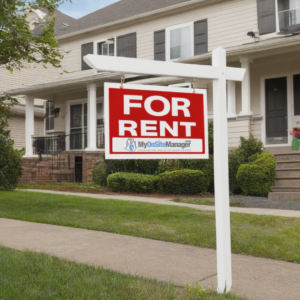Los Angeles, known for its vibrant culture, scenic coastlines, and bustling urban life, has always attracted people from across the globe. However, with that appeal comes a notorious reputation—sky-high housing prices and an increasingly competitive rental market. As we step into 2025, new data reveals key trends shaping LA’s real estate landscape, offering insight into where the market stands and where it may be headed.
Home Prices Continue Their Upward Trajectory
In 2019, the median home price in Los Angeles was about $600,000. Fast forward to October 2024, and that number has soared to $956,210—a nearly 60% increase in just five years. This dramatic rise reflects the growing demand for housing in a city with limited space for new development and ongoing population growth.
Interestingly, there was a short-lived dip in May 2024, where median home values briefly fell to $800,000. Experts suggest this could have been caused by a mix of inflation concerns, political shifts, and even environmental events like fires or flooding. While it was a momentary drop, it serves as a reminder that LA’s housing market, like any other, is susceptible to fluctuations.
Renters Feel the Pressure
Renting in Los Angeles has also become significantly more expensive. In 2020, the median rent was $2,300, which increased to $2,841 by 2024—a 23% jump over four years. This rising cost of living continues to squeeze tenants, especially those with fixed incomes or working in lower-wage industries.
As of January 2025, the average rent for one- and two-bedroom apartments is around $2,057, according to Statista. While that’s lower than the 2024 median, it still reflects the upward momentum and varies depending on neighborhood and amenities. This ongoing rise in rent pushes more people to look for shared housing, relocate further from the city center, or consider homeownership—if they can afford it.
Foreclosures: A Double-Edged Sword
In neighborhoods like Sylmar, data revealed 59 foreclosures in 2024, suggesting certain pockets of the city may be facing financial distress. While this is concerning for homeowners, it also opens the door for investors and first-time buyers who may find below-market opportunities in these areas.
Foreclosures can play a unique role in balancing out high property prices, and strategic investment in these properties could help revitalize neighborhoods. However, without safeguards, they also risk displacing longtime residents and altering community dynamics.
A Shifting Market: Sale Prices vs. Listing Prices
One particularly interesting trend is the disparity between listing and sale prices. While homes have appreciated by 1.9% in the past year, the median listing price has actually fallen by 2.9%, sitting at $1.2 million. Meanwhile, the average sale price rose to $1 million, roughly 16% lower than the listing price.
This suggests that sellers may be overestimating their home values or that buyers are becoming more budget-conscious. The increased number of lower-end homes being sold could also point to a larger demand for more affordable properties, which might gradually reshape the city’s housing profile.
Inventory Holds Steady (For Now)
As of November 2024, there were 8,661 homes for sale in Los Angeles—a slight 0.6% decrease from the previous month. While this indicates a fairly stable inventory, any significant shifts in employment, interest rates, or migration trends could quickly tilt the balance.
A steady inventory helps prevent bidding wars and keeps the market from overheating, but with ongoing demand and tight zoning restrictions, LA’s housing availability remains precarious.
What This Means for LA Residents and Investors
Los Angeles continues to be one of the most challenging and dynamic housing markets in the U.S. For renters, the rising costs demand creative budgeting, potential relocation, or roommate arrangements. For buyers and investors, it remains a high-stakes game—timing, location, and financial readiness are crucial.
Meanwhile, policymakers and housing advocates must address the root issues: affordable housing shortages, zoning limitations, and homelessness. With careful planning and collaboration, there’s potential for progress—but without intervention, the divide between housing affordability and availability may only grow wider.
Source: Los Angeles Rental and Housing Market Statistics for 2025

